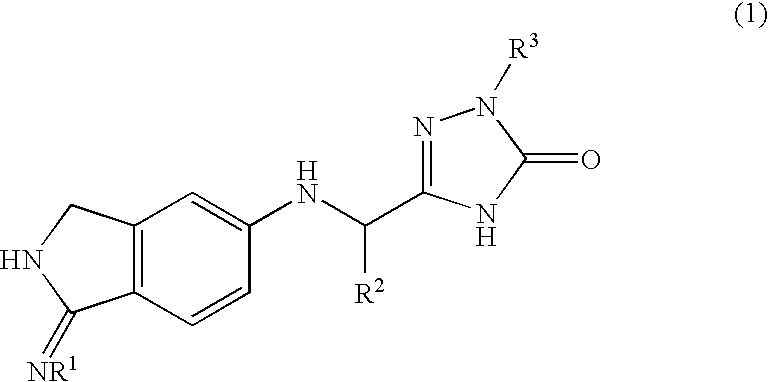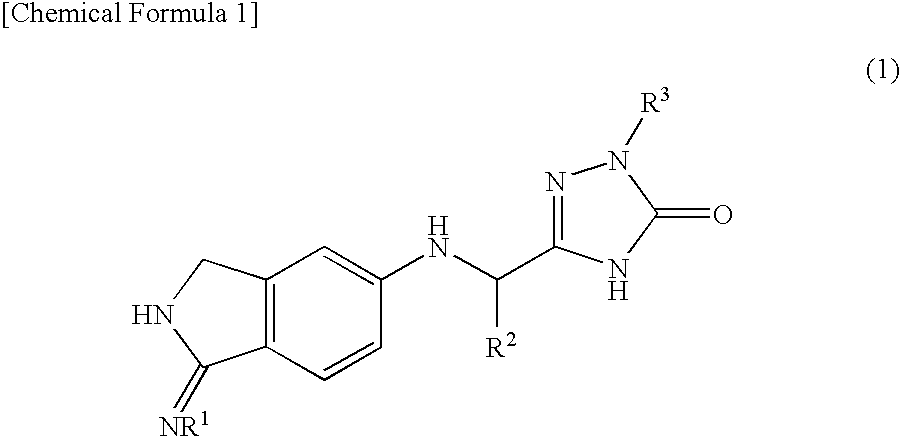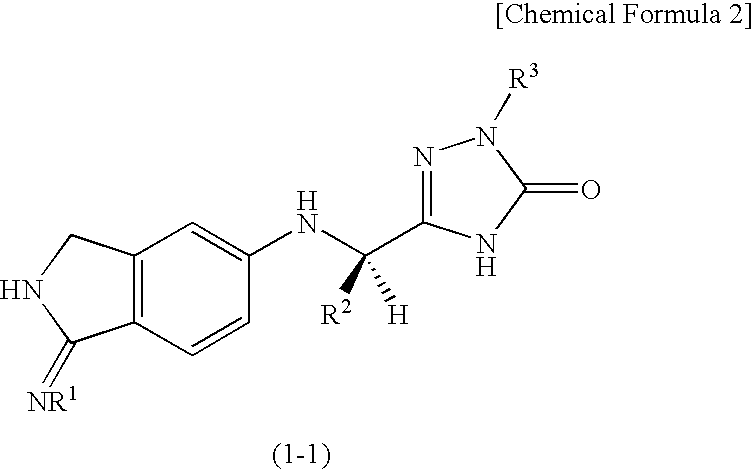2,3-dihydro-iminoisoindole derivatives
a technology of iminoisoindole and dihydroiminoisoindole, which is applied in the field of new drugs, can solve the problems of inadequate known compounds and affect the function of essential organs, and achieve excellent inhibition of clotting factor, excellent anticoagulant effect, and excellent anticoagulant
- Summary
- Abstract
- Description
- Claims
- Application Information
AI Technical Summary
Benefits of technology
Problems solved by technology
Method used
Image
Examples
production example 1a
3-Fluoro-2-(3-hydroxypropyl)-6-methoxyphenol
[0413]
[0414]To a 50 ml solution of 4.46 g of 6-fluoro-2-hydroxy-3-methoxybenzaldehyde in dichloromethane there was added 10 g of (triphenylphosphoranilidene)acetic acid ethyl ester while cooling on ice. After stirring at room temperature for 30 minutes, the reaction mixture was poured into a silica gel column and elution was performed with heptane-ethyl acetate=3:1. The eluate was concentrated under reduced pressure. The residue was dissolved in 100 ml of ethyl acetate, and 1 g of 10% palladium-carbon was added prior to stirring for 7 hours at room temperature under a hydrogen atmosphere. The reaction mixture was filtered through Celite, and the filtrate was concentrated under reduced pressure. The residue was dissolved in 100 ml of THF, 2 g of lithium borohydride was added while cooling on ice and the mixture was stirred overnight at room temperature. After then adding 1N hydrochloric acid to the reaction mixture while cooling on ice, ext...
production example 1b
5-Fluoro-8-methoxychromane
[0416]
[0417]After dissolving 4.78 g of 3-fluoro-2-(3-hydroxypropyl)-6-methoxyphenol and 9.4 g of triphenylphosphine in 70 ml of THF under a nitrogen atmosphere, the mixture was cooled to −74° C. Next, 7 ml of DIAD was added to the reaction mixture, which was then raised to room temperature and stirred overnight. The reaction mixture was concentrated and the residue was purified by silica gel column chromatography (ethyl acetate-heptane system) to obtain the target compound (3.6 g) as an oil.
production example 1c
5-Fluoro-8-methoxychroman-6-carboaldehyde
[0418]
[0419]To a 130 ml THF solution containing 3.6 g of 5-fluoro-8-methoxychromane and 4.2 ml of N,N,N′,N′,N″-pentamethyldiethylenetriamine there was added dropwise 8 ml of n-butyllithium (2.55 M, hexane solution) at −74° C. After stirring at −74° C. for 1 hour, N-formylmorpholine was added. Stirring was continued for 1 hour at room temperature, and then 1N hydrochloric acid was added to the reaction mixture while cooling on ice, and the mixture was extracted with ethyl acetate and dried over anhydrous magnesium sulfate. The desiccant was filtered out and the filtrate was concentrated under reduced pressure. The residue was purified by silica gel column chromatography (ethyl acetate-heptane system) to obtain the target compound (1.50 g) as a colorless solid.
[0420]1H-NMR (CDCl3) δ 2.03-2.10 (m, 2H) 2.80 (t, J=6.4 Hz, 2H) 3.90 (s, 3H) 4.36 (t, J=5.2 Hz, 2H) 7.16 (d, J=6.4 Hz, 1H) 10.24 (s: 1H)
PUM
| Property | Measurement | Unit |
|---|---|---|
| Therapeutic | aaaaa | aaaaa |
Abstract
Description
Claims
Application Information
 Login to View More
Login to View More - R&D
- Intellectual Property
- Life Sciences
- Materials
- Tech Scout
- Unparalleled Data Quality
- Higher Quality Content
- 60% Fewer Hallucinations
Browse by: Latest US Patents, China's latest patents, Technical Efficacy Thesaurus, Application Domain, Technology Topic, Popular Technical Reports.
© 2025 PatSnap. All rights reserved.Legal|Privacy policy|Modern Slavery Act Transparency Statement|Sitemap|About US| Contact US: help@patsnap.com



